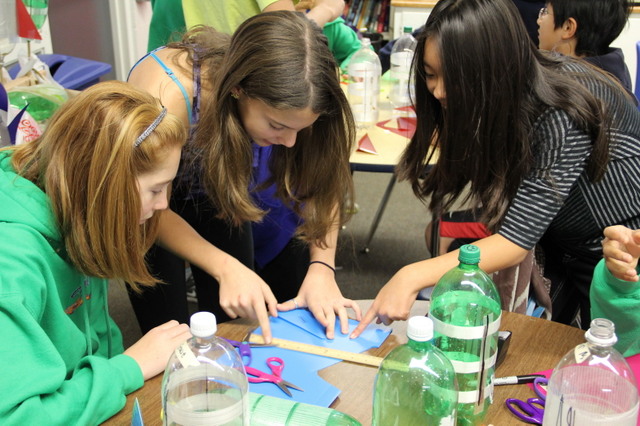
This is a great project -- building your own water-powered bottle rocket -- but once the rockets have been constructed and have launched, it's time to think back about the process and try to understand WHY things happened as they did and what it all means. In particular we are interested in how the behavior of the rocket illustrates Newton's three laws of motion. Based on our own experience, we would like to advise you of essay experts who describe these laws and explain physical processes so that children understand the essence.
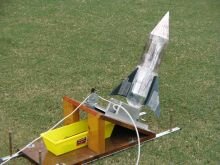 Returning to class after Winter Break, we launch the rockets across the playing field by filling them 1/2 full of water and pumping 70 psi of air into each one.
Returning to class after Winter Break, we launch the rockets across the playing field by filling them 1/2 full of water and pumping 70 psi of air into each one.
We fire the rockets off at 60 degrees so we get a bit of elevation and distance.
The lab write-up forces students to examine each part of their rocket and try to explain why it is important and what effect it had on the rocket's flight.
For instance, what will happen if we fire a rocket off that has no fins? How about one that has no nose cone or second stage? What happens to a rocket that does not have a counterweight in the nose cone? We try all of these scenarios during our launch days so that students will get a first-hand understanding of why rockets need each of the parts we have so carefully engineered.
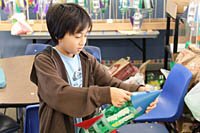
During the construction process, it's easy for students to ignore the little details. OK, let's just slap on this fin.... I don't really care about how straight it is. However, once the rocket launches, these little details take on HUGE significance.
Students who put a lot of time and energy into being precise in their building are rewarded with outstanding height and distance marks for their rocket. Rockets that are put together too quickly or with not enough care ... well, the results are quite obvious.
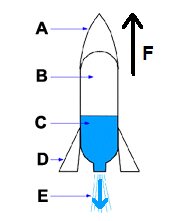 Each of the letters in this diagram represents a particular part of the bottle rocket that students must consider. They have to explain what the section is and then describe what effect it has on the performance of the rocket.
Each of the letters in this diagram represents a particular part of the bottle rocket that students must consider. They have to explain what the section is and then describe what effect it has on the performance of the rocket.
Lots of misconceptions abound but students do have a chance to work together to figure out the questions. Since this is new territory for most students, we go over the physics concepts very carefully in class. Bottle rockets are a great way to introduce Newton's laws of motion in a concrete way but for many sixth grade students the physics concepts are, at first, quite a challenge.
Here are some sample questions from the lab:
1. Nose Cone: (A) Why do you need it? What purpose does it serve?
2. Counter Weight (bag of rice):
Why do you need it? What purpose does it serve?
3. Center of Mass:
What is important about this “balance point?” What difference does it make?
4. Air under Pressure:
( B ) What is the purpose of putting 70 psi of air into the bottle? Why is it needed?
5. Fins:
( D ) a] Why do you need fins on a bottle rocket?
b] What happens if they are aligned incorrectly?
6. Fill Height of Water:.
( C ) a] What happens if you put too little ..or.. too much water into your rocket?
b] How is the ejection of water related to Newton’s 3rd law?
7. “Nozzle” of Rocket:
a] What happens here? b] What comes out FIRST? …….WHY?
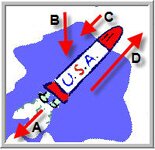
9. Inertia:
a) What role does inertia play in the launch process?
b) Why is the total MASS of the rocket related to Newton’s 2nd Law?
c) What do the letters A, B, C, & D represent in this diagram?
10. Modifications:
Now consider the total distance flown by your rocket. What TWO (2) modifications could you have made on your bottle rocket to have achieved a better flight distance or stability?
 Click on the image or the link below to send an email to MrC at
Click on the image or the link below to send an email to MrC at